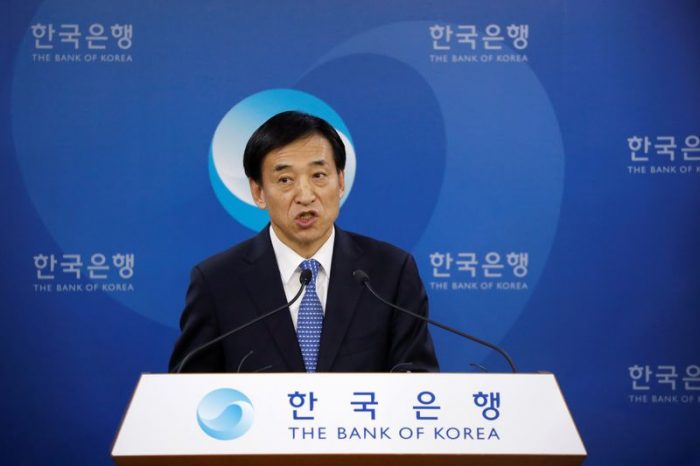South Korea’s central bank cut interest rates to a record low on Thursday as it warned the coronavirus pandemic would be worse for Asia’s fourth-largest economy than the 2008 global financial crisis.
The Bank of Korea’s board voted unanimously to cut its policy rate (KROCRT=ECI) by a quarter of a percentage point to 0.5 per cent, the lowest since the bank adopted the current system in 1999.
The move was expected by 12 of 19 economists polled by Reuters.
The bank also downgraded its 2020 economic projection to a 0.2 per cent decline from 2.1 per cent growth forecast in February.
That would be the biggest contraction since 1998, during the Asian financial crisis.
The BOK also sees inflation at 0.3 per cent this year, down from its February forecast of 1.0 per cent.
Governor Lee Ju-yeol said the bank is ready to ramp up government bond buying to soak up the massive public debt needed to cover the cost of new stimulus.
“We plan to actively purchase treasury bonds to stabilise markets should long-term yield volatility increase,’’ Lee said in a press conference.
“With the rate cut, the policy interest rate is now very close to the effective lower bound,’’ Lee added.
That prompted some analyst to expect the easing cycle may have reached its end although Lee declined to comment on whether or not additional easing was needed.
The BOK is working in tandem with the government to extend liquidity to businesses hit by the coronavirus pandemic.
South Korea has rolled out a 245 trillion won ($197.9 billion) package — 12.8 per cent of gross domestic product — to combat the virus fallout.
It is also preparing a third supplementary budget after April exports suffered the worst slump in 11 years and jobs vanished at the fastest pace since 1999.
The BOK had previously pledged unlimited liquidity through to June via repurchase agreements and began lending to securities firms for the first time in its 70-year history.
South Korea’s central bank joins counterparts in the U.S., Australia, the UK and New Zealand in bond-buying operations to nurse the economy through the pandemic.
As the bank ramped up stimulus on Thursday, South Korea reported 79 new coronavirus cases, the largest one-day increase since April 5.
This raised fears of a second wave of infections after the country managed to bring down that number to around 10 in early May.
The country has reported 11,344 infections and 269 deaths.
(Reuters/NAN)

